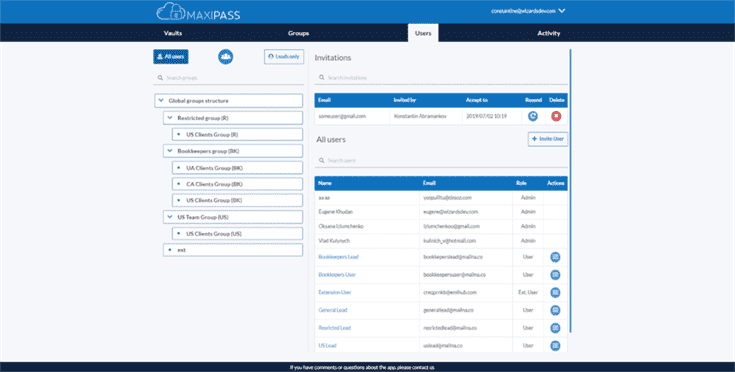These functions raise customer happiness, cut down on support expenses, and open up time to handle trickier client queries. Open source mobile application development tools can be a boon to mobile app developers due to their free nature. Rapid Mobile App Development platforms are no-code programming tools that let users quickly and easily build mobile apps for a wide range of business processes. Also known as RMAD, the solution offers user-friendly, drag-and-drop interfaces to create both internal and customer-facing apps.
Businesses can unleash the full power of mobile devices, spur innovation, and provide fantastic customer service by using a quick and agile strategy for building apps. With the help of the comprehensive low-code coding system Alpha Anywhere, programmers may quickly produce cross-platform mobile applications. It has a graphical user interface, strong database management skills, and integrated security measures. Data coordination, offline capabilities, and connection with different back-end systems are all supported by Alpha Anywhere.
Consumer vs. Enterprise Apps: The Five W’s and One H
Rapid Mobile Application Development means using code free tools to expedite the process of creating mobile applications. Apps require customization to provide a satisfactory user experience. Without advancing the app software, it may fail to live up to standards in comparison to competitor apps that were built from the ground up. Most RMAD platforms build functional applications with a graphical user interface . GUI is user-friendly from the back-end of the app because it uses visuals instead of code, allowing novice developers to manipulate software without relying on command line text. It is used to represent solutions for the development of user-friendly and efficient mobile applications in the shortest and easiest way.

The next stage includes review and analysis of information objects as compared to the business model. The credits of these data collections are characterized and their relevance to the business is plainly mapped out. It is essential that RMAD is flexible, gets an open architecture, and provides the possibility to use various approaches in the creation of new apps.
JS Frameworks
Attached to the controls on the page, you can then add event handlers and bind controls to the already-defined object data. This is the heart of the application, as the app developer builds page by page, keeping an eye on the UX of the page. Attached to the controls on the page you can then add event handlers and bind controls to the object data already defined.
- The action editor interacts with the object browser to allow the workflows to interact with the previously defined objects, properties, and rules.
- While companies build apps with the customer in mind, the way the product will be received after being made available on the market is difficult to predict.
- A free platform called Buzztouch utilizes to create native applications for both iOS and Android.
- Although RMAD is a fast and easy way to create new software for mobile devices, it lacks flexibility and scalability.
- A close examination uncovers that these layers likewise indicate the extent of focus and financial plan traditionally accorded by undertakings.
- It’s also cross-platform, meaning it can run on multiple operating systems.
- This frees the Functional consultant from having to write specification which are then incorrectly interpreted by the developer.
With a solution like Axway Appcelerator, companies can not only keep track of KPIs with Analytics but also manage the entire backend integrations and APIs with best in class Mobile Backend features. Gartner analysts coined the term RMAD to describe a new category of software to help people develop business apps quickly and easily. These no-code or low-code tools allow IT or business users to do cross-platform mobile app developmentfaster than ever before.
Cons of RMAD
One of the major benefits to RMAD is the fact that it also takes a significantly smaller investment up front to get an app off the ground, as all of the tools used to design the software don’t require any extensive knowledge of coding. This does not mean that the end result will be permanently inexpensive, however – an app will still require ongoing support to add new features, address bugs, improve UX and UI and more. One of the biggest mistakes that developers make is assuming that faster and easier development leads to less management from a long-term perspective, which is absolutely not the case. With this simple and user-friendly tool, you can create iOS and Android apps. It is an impressive tool as it is committed to a particular mobile application.

Applications are available offline and are connected to SQL and NoSQL databases. RMAD uses low-code/no-code tools that access cross-platform development of mobile applications across multiple devices’ operating systems , such as iOS and Android. However, they have lately begun offering help to Android applications.
Mobile App Development Platform
SAP, in addition to its Agentry capabilities, recently introduced a new RMAD environment called the mobile development kit. This environment was previously called SEAM , which is a more accurate name for its capabilities. Again, like Agentry this new RMAD tool is a metadata-driven environment that allows both for the customizing of the new standard native SAP applications such as SAP Asset Manager, as well as for creating new native mobile app’s. Both of these types of app’s built using the mobile development kit can be developed with offline capabilities and clever synchronization of business logic. As a native mobile app, it can use all the standard on-device features such as the camera, facial ID, accelerometer, VR, etc. Rapid mobile app development tools are a class of coding-optional tools that enable nonprogrammers to build mobile apps to support, at a minimum, iOS and Android devices.
Another idea to ensure the safety of the software is to store important data on-premise or on a private cloud. This is much more convenient than keeping all the information within the user’s device. With this platform, a business can easily manage and keep track of all their apps, who should use and when it should be used. With these benefits, it will lead more people to use the apps and will have better investment in return.
Do you need help with your App Development or Web Development project?
RMAD uses code- free programming tools to accelerate the process of creating applications for use on mobile platforms. This code-less environment enables developers to simplify app development by making it faster by breaking down rapid mobile app development (RMAD) the entire app development process. Adopting RMAD and utilizing the appropriate technologies will be crucial for organizations to stay forward in the age of the Internet as the app development environment continues to change.

Over the past 5 years, we have seen a drastic increase in the number of apps along with growing demand for quicker and more efficient apps. With the growing demands and building the apps in a short time, we have seen the failure rate has also increased throughout the creation, deployment and management of mobile applications. RMAD focuses primarily on quick and affordable mobile application development. https://www.globalcloudteam.com/ When selecting the RMAD platform it is important to identify how the platform generates, manages and maintains the code. While businesses design apps with the client in mind, it is difficult to foresee how the product will be accepted once it is in the market. A native app’s return on investment may not live up to expectations if the exact cost of development is not consistently evaluated.
Alpha Anywhere
Again, like the business rules these actions are easy to create and the tool is aimed at the functional consultant inputting these workflows rather than the app developer. Deployment and Lifecycle management are built in to the Mobile Development Kit as part of the Cloud mobile services. Updated App’s are sent to the field with a few clicks, the application checks for updates every time it communicates. Wix, but for mobile apps with the actual capability to build an app that’s launch ready in 20 – 30 minutes.
